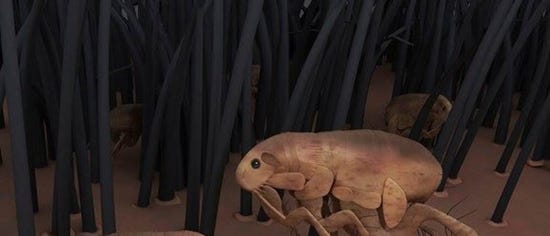
FLEAS
ABOUT FLEAS AND FLEAS CONTROL
FLEAS ORDER SIPHONAPTERA
Complete life cycle; minute to small (1-10 mm in length); wingless; strongly laterally compressed; piercing and sucking mouthparts for a life as ectoparasites on mammals and birds; hind legs are highly modified for jumping and with various setae and spines for holding onto the hair or feathers of their hosts. Larvae are wormlike, and live in the nests of their hosts.
Life Cycle
Most fleas lay several hundred eggs per female, either in the nest of a most or on the host from where they usually fall into the nest. The larvae, with three instars, live in the nest from several weeks to many months, feeding on organic matter. Only one species has a parasitic larvae which burrows into the skin of the host. Learning how to get rid of fleas is crucial for the health and comfort of the host.
The larvae pupate within various shaped cocoons in the nest and adult emergence can be delayed up to several months until a suitable host is present. The vibration of a host arriving is enough to trigger the emergence of adult fleas.
Source: A field guide to insects in Australia - third edition - Paul Zborowski and Ross Storey - New Holand publishers

